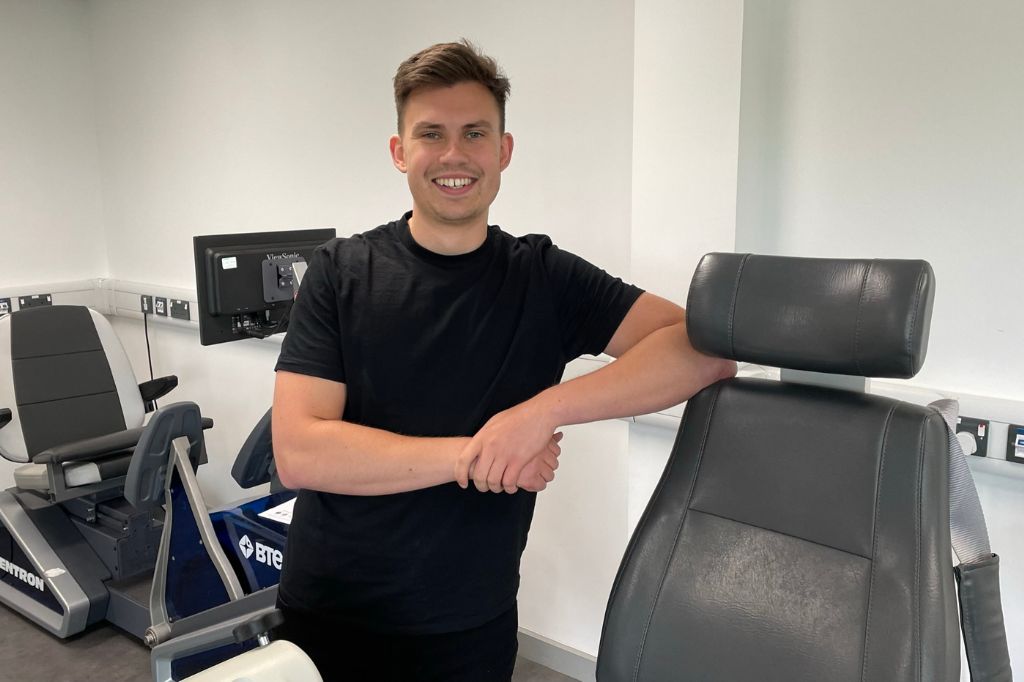Cyclists need more awareness about headgear and safety according to new research
Date 15.06.2022
15.06.2022
Cyclists can be unaware of the safety limitations of protective headgear, leading to riskier behaviour that could mean they ignore the seriousness of even ‘minor’ collisions.
The marketing of cycling helmets also needs to clearly reflect how much protection they give, according to research led by the University of Northampton (UON).
UON Lecturer in Health Sciences Dr Jack Hardwicke (pictured; himself a former competitive road cyclist) led the research in collaboration with the University of Central Lancashire (UCLan).
405 competitive cyclists from across the globe were surveyed about their knowledge of headgear use, how and when they used protective headgear, and their perceptions of sports-related concussion (SRC) and medical-care-seeking behaviours.
Generally, cycling headgear does not prevent concussion, but it can reduce the severity of traumatic head injury following a collision.
Although most of the surveyed cyclists reported they would seek medical help if their headgear cracked after a high impact collision (262), many said they would not if their helmet was only scuffed (191) or their headgear had not touched the floor (181).
Only 20.5% of the cyclists correctly reported that a bicycle helmet does not fully protect against concussion.
This lack of knowledge amongst cyclists can lead to an increase in riskier behaviours. The research found greater risk taking is more prevalent amongst the over 50’s and mountain bikers, although this could be linked to headgear not being more routinely mandated in previous years or those cyclists already engaging in more ‘thrill-seeking’ behaviour, respectively.
Another reason for this outlook could be related to the marketing of protective headgear. Headgear design follows research in which it is required to withstand impacts in a laboratory environment. But this does not necessarily reflect ‘real world’ collisions or the complexity of concussive injuries.
Of the findings, Jack said: “Cycling – whether for recreation or competition – is an increasingly popular activity across the world. There are around 150,000 active members registered with British Cycling, and it’s great to see that number appears to be increasing.
“Sports-related concussion has been a concern within other sports – such as Rugby and American Football – for some time now, understandably so. But as our research shows, cyclists may be lulled into a false sense of security about their safety from sports-related-concussion because of their perceptions of injury and by the very fact that many are wearing headgear marketed as giving them protection from concussion.
“Coupled with a tendency within the sport to ‘brush off’ injuries and with many more of us ‘getting back on our bikes’, there is a need to make sure those who enjoy cycling do so as safely as possible.
“Our conclusions are not that cycling headgear doesn’t afford protection, but that more independent research underpinning new technologies marketed for reducing concussion is needed.”
“We hope that future research generated by our findings will also compel leading figures within the cycling sphere to ‘up gear’ about head safety and help promote to cyclists the need to adopt a more cautionary approach when a crash occurs.”
Dr Howard Hurst, Senior Lecturer in Sport, Exercise and Nutritional Sciences at UCLan, added: “While there’s no doubting headgear can reduce the severity of head trauma, users should be educated on the limitations of such technologies. Headgear test standards currently only simulate impacts up to around 22 km/h. While this may meet the needs of most recreational riders and commuters, it is questionable whether they afford the same level of protection at the higher speeds typical of cycle racing.
“Additionally, while current research and test standards may demonstrate how effect headgear are in reducing impact forces, they cannot predict the psychological and cognitive trauma associated with concussion.”